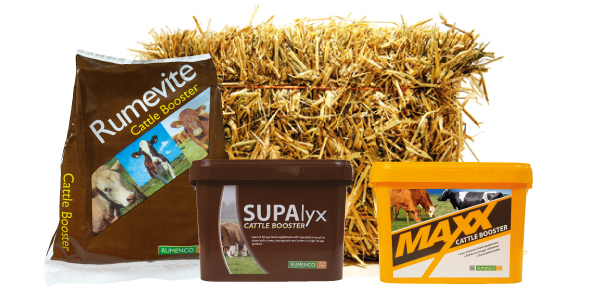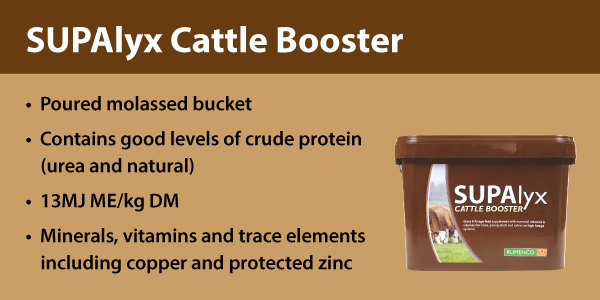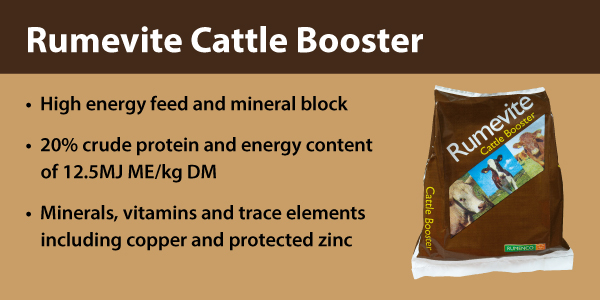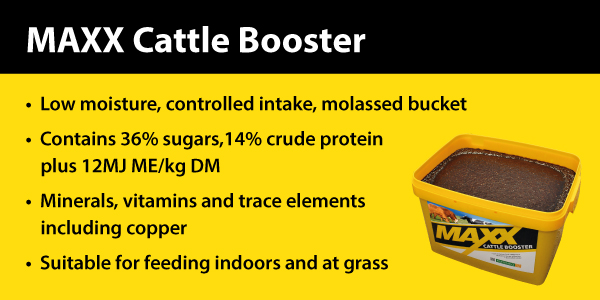Suckler Cow Fertility Drives Profitability
Increasing the number of calves reared per 100 cows put to the bull by just 2% can increase calf sales by up to £1,000 per year AHDB estimate. Ensuring good fertility of your breeding cows and heifers has the largest influence on this financial figure by far, says Dr Alison Bond, Rumenco Commercial Nutritionist, with making simple changes to nutritional management particularly important this breeding season.
“Having a clearly defined 12-week calving period, with the objective of targeting a 365-day calving interval and limiting calf mortality to less than 3% from birth to weaning should form the cornerstones in optimising farm output and the overall profitability of your suckler herd” says Dr Bond.

Reports show that the average calving interval within the UK suckler herd is currently 440 days, meaning that the average cow is unproductive for an additional 75 days than she needs to be and is therefore a cost to the herd.
“Cow body condition score undoubtably has the single largest impact on this fertility parameter, with energy supply in the ration having a significant influence. After calving, a cow’s primary objective is to produce adequate milk to feed her calf, second is to maintain herself, with reproduction coming last on her list of priorities” states Dr Bond. “Ensuring adequate energy in her diet is therefore essential in order to trigger a return to oestrus and support conception rates. Given the tight forage stocks, long winter and slow start to spring experienced by the majority of producers across the UK this season, many cows are reported to be struggling with energy reserves which is sure to impact on fertility if supplementary feeds are not offered.”
Download your FREE guide to body condition scoring and record sheet.
Another major influence on herd fertility is copper status, due to this essential mineral’s role in reproductive performance. Dr Bond notes “Data from a recent UK study has worryingly revealed 54.6% of beef cows to be copper deficient which appears to be associated with extensively grazed animals rarely offered any supplementary minerals. This makes copper deficiency and subsequent poor fertility (presented as depressed or delayed oestrus behaviour especially in heifers) a major issue within our suckler herds.
Copper deficiency in cattle may be “primary”, due to a low level of copper in the diet, or more commonly “secondary”. A secondary copper deficiency occurs where a decreased level of copper is available to the animal due to the action of antagonists, such as iron, molybdenum and sulphur which are commonly found in grass and forage crops.
“Appropriate and responsible advice on copper supplementation is essential meaning that information on background copper and antagonist levels in soils and forages should be assessed to allow the correct supplement choice to be made”, advises Dr Bond.
Rumenco has a full range of free-access blocks and buckets which are all suitable for supplementing breeding cattle at grass this season in order to support fertility. In particular, the MAXX, SUPAlyx and Rumevite Cattle Booster supplements all contain good levels of energy to support optimal body condition scores, plus minerals and vitamins including copper where there is a risk of mineral deficiency. Non-breeding growing cattle will also benefit from the additional energy, protein and copper especially as grass quality starts to decline from mid-summer onwards.
As an alternative to boluses and drenches, MAXX, SUPAlyx and Rumevite Cattle Booster products also provide considerably more nutritional support whilst offering the well-known benefits of free access supplementation. Dr Bond concludes, “The challenges facing suckler herds this year appear to present additional threats to fertility where, if not addressed directly, will be sure to impact cow output and subsequent profitability. Offering nutritional supplementation to breeding cows and heifers will be even more important this grazing season if performance is to be at the very least maintained, and more importantly to allow for continuing improvement of fertility within herds and their resulting profitability.
To contact us about the range please visit our contact us page.



